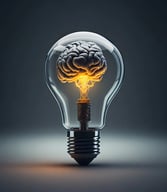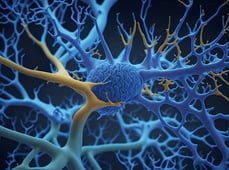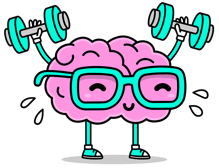
7 Fascinating Facts About the Brain: The Most Mysterious Organ
The human brain is one of the most complex and intriguing organs in our body. Weighing in at around three pounds, it is the control center for nearly everything we do—thinking, feeling, moving, and even breathing. But despite centuries of study, much of the brain’s inner workings still remain a mystery. Here are seven fascinating facts about the brain that are sure to amaze you!
FACTS
1. Your Brain Generates Enough Electricity to Power a Small Light Bulb
One of the most incredible things about the human brain is its electrical activity. Every thought, movement, and sensation is the result of electrical impulses traveling through neurons. In fact, the brain generates so much electricity that it could, in theory, power a small light bulb!
While the exact amount of electricity the brain produces is difficult to measure, it's estimated that the brain can generate about 20 watts of electrical power when awake. This is enough to power a dim lightbulb or a small electronic device. It’s a testament to how active and dynamic the brain is, even when we’re not consciously thinking about it!
Your neurons create and send more messages than all the phones in the entire world.
2. Your Brain Is More Active While You Sleep
It may seem counterintuitive, but your brain is actually more active when you're asleep than when you're awake. During sleep, particularly during the REM (Rapid Eye Movement) phase, the brain processes information, consolidates memories, and carries out important maintenance tasks.
In fact, during REM sleep, the brain's activity can be as high as it is when you're awake! This is why dreaming occurs mostly in this stage of sleep—your brain is synthesizing emotions, memories, and new experiences into cohesive narratives. Sleep is also when your brain "cleans up," flushing out toxins that accumulate during waking hours.
3. Your Brain Has Enough Neurons to Fill a Football Stadium
The human brain is made up of about 86 billion neurons—cells that transmit information through electrical and chemical signals. To put that number into perspective, that’s enough neurons to fill a football stadium! These neurons are connected by trillions of synapses, which help create the complex web of communication in the brain.
The sheer number of neurons and synapses enables the brain to process vast amounts of information at lightning speed, allowing us to think, learn, and react in real-time.
4. The Brain’s Storage Capacity Is Virtually Unlimited
While we might experience "brain fog" or forget things from time to time, the human brain’s storage capacity is virtually limitless. Some scientists estimate that the brain’s storage could hold around 2.5 petabytes of information—roughly equivalent to about 3 million hours of TV shows.
Unlike a computer, which has finite storage space, your brain doesn’t have a strict capacity limit. Instead, it continually adapts and reorganizes itself as you acquire new knowledge. This incredible adaptability is referred to as neuroplasticity—the brain's ability to form new neural connections and "re-wire" itself based on new experiences or learning.
The human brain has an almost limitless storage capacity, capable of holding the equivalent of 3 million hours of TV shows—enough to last over 300 years!
5. Your Brain Can’t Feel Pain (But It Can Process It)
While your brain controls pain perception, it doesn’t actually have pain receptors itself. The brain processes pain signals that are sent to it by other parts of the body, but it does not experience pain in the same way that, say, your skin or muscles do.
This is why the brain can perform intricate surgeries (such as brain surgery) while the patient remains awake without feeling pain—because there are no pain receptors inside the brain itself. However, the brain can interpret and process pain signals, which is why it can feel "painful" experiences.
6. The Brain Is Capable of Changing Its Own Structure (Neuroplasticity)
We used to think that the adult brain was a static organ, incapable of making substantial changes. However, research has shown that the brain is incredibly flexible and adaptable. Neuroplasticity refers to the brain's ability to reorganize itself by forming new neural connections throughout life, particularly in response to new learning, experiences, or injuries.
This is why rehabilitation can be so effective after a brain injury—through repeated practice and therapy, the brain can rewire itself and regain lost functions. It also explains why learning new skills, whether it’s a language or an instrument, can actually change the structure of your brain over time.
7. Your Brain Can Store Memories in Different Forms
Memories aren’t just "stored" in the brain like files on a hard drive; they’re encoded in complex ways across different regions. When you remember something, it's the result of a network of brain regions working together to process various components of the memory—such as sights, sounds, and emotions.
For example, the hippocampus is involved in forming new memories, while the amygdala processes emotional content. Your brain stores memories in both short-term and long-term forms, with long-term memories becoming more stable over time. Interestingly, when you recall a memory, your brain doesn’t simply “replay” it like a video; it reconstructs it, often blending in new details or perspectives, which is why our memories can sometimes be unreliable.
Conclusion
The human brain is an astonishingly powerful and mysterious organ. From its ability to generate electricity to its remarkable capacity for memory and learning, the brain continues to amaze scientists and researchers every day. Whether you’re solving a complex problem, reminiscing about the past, or simply enjoying a moment of relaxation, your brain is always at work, shaping and guiding your experiences. Understanding just a fraction of its complexity gives us a deeper appreciation for the marvels of the mind!
Next time you flick on a light, take a moment to marvel at the fact that your brain generates enough electricity to power something as simple as that lightbulb—because even when you’re not actively thinking, your brain is always working overtime.
5,000 Awesome Facts
Best Brain Teasers of All Time










Explore More
Inspiration
Explore tips for fitness, decor, and wellness.
Connect
Discover
© 2024. All rights reserved.




